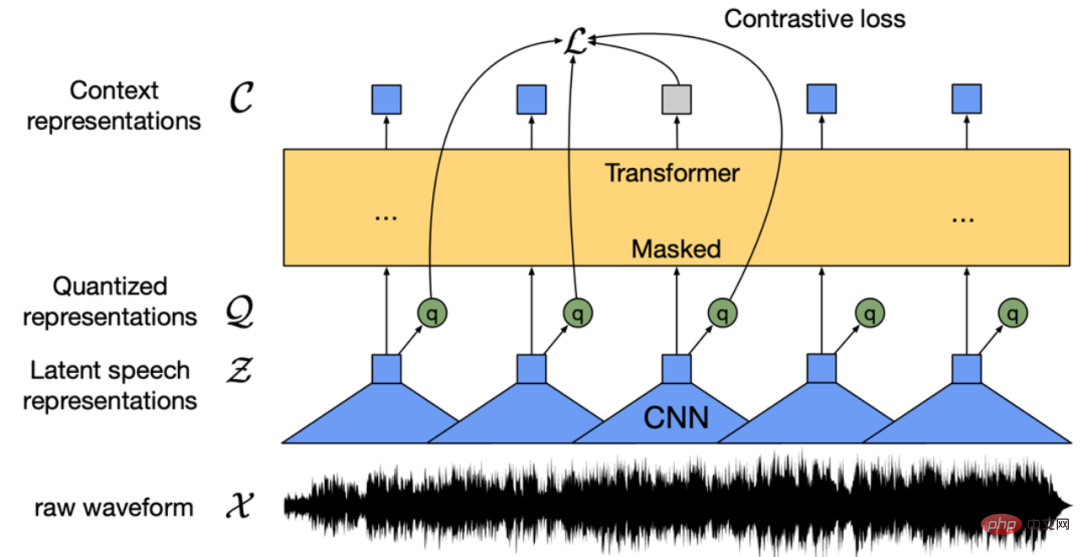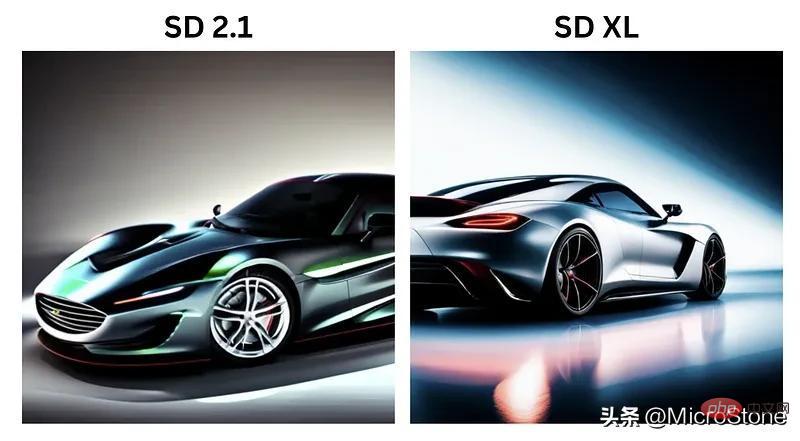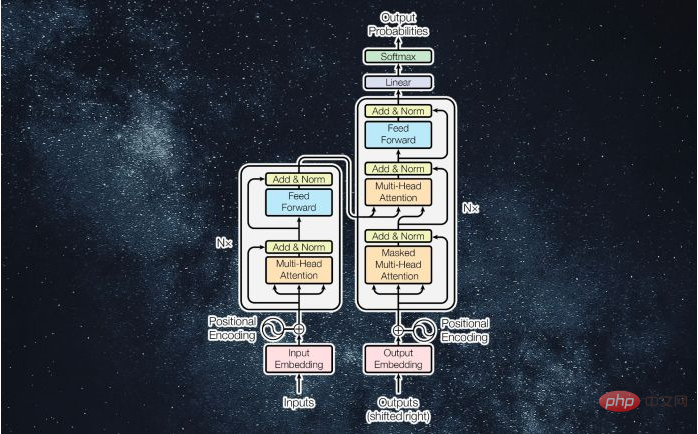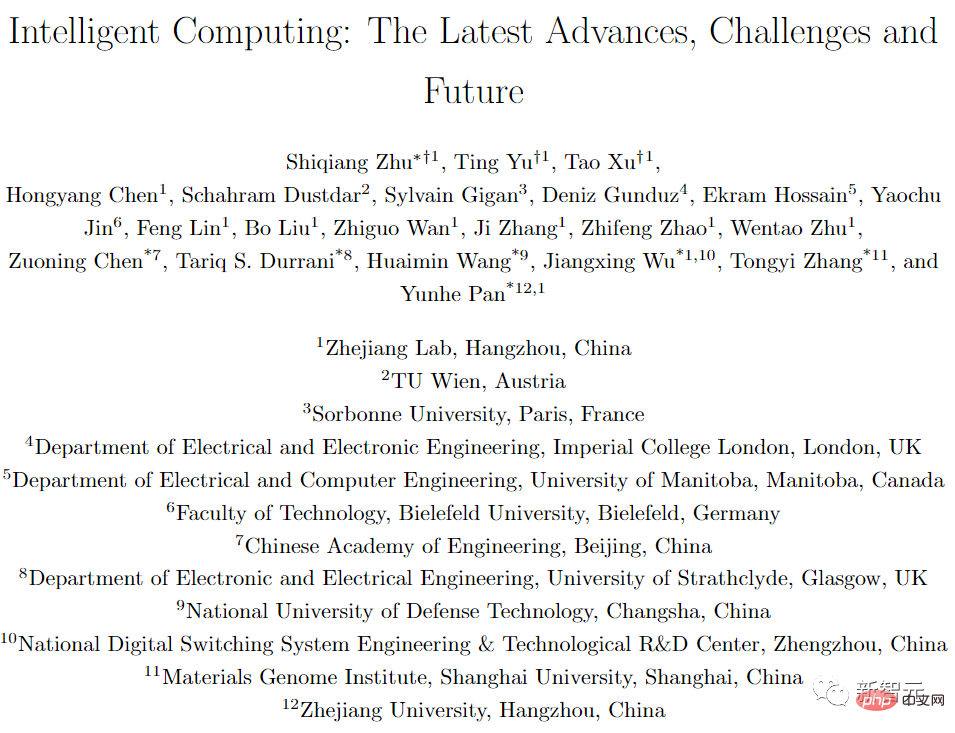 Technology peripherals
Technology peripherals AI
AI Revealing the 'hard core skeleton” behind the diffusion model: understand the key role of Backbone in generative art and intelligent decision-making in one article
Revealing the 'hard core skeleton” behind the diffusion model: understand the key role of Backbone in generative art and intelligent decision-making in one article
Introduction: Unveiling the mystery of the diffusion model and its "backbone"
Nowadays, there are an endless stream of exquisite paintings, audio and video content created by AI, among which there is A technology that works like magic to create amazing works from scratch is Diffusion Model. Deep in the core of its operating mechanism, there is a crucial structure - we call it "backbone". It is this powerful supporting structure that gives the model the ability to learn and understand data. Today, we will analyze the backbone of the diffusion model in a simple and in-depth manner to see how it plays a role in promoting the efficient work of the model.
1. Entering the world of diffusion model
The diffusion model is a deep learning model based on a probabilistic framework. It gradually changes from a clear state to a noise state by simulating data, and then restores it in reverse. The process of clarifying the state, thereby generating high-quality new data samples. This process not only helps generate new data, but also reveals the inherent laws of complex data distribution.
2. Uncover the mystery of "Backbone"
In the field of machine learning, Backbone usually refers to the part of the neural network responsible for extracting basic features, which is The foundation and core of the model structure. In the diffusion model, the backbone plays a vital role, which is mainly reflected in the following aspects:
- Feature extraction: In the denoising process of the diffusion model, the backbone is responsible for The task of feature identification and extraction from data with different noise levels. It converts data such as high-dimensional images or signals into a series of low-dimensional and representative feature vectors, which are the key basis for subsequent reconstruction steps.
- Conditional modeling: The backbone of the Diffusion model is often a deep neural network (such as a convolutional neural network CNN or Transformer), which learns the probability distribution characteristics of the data through training. At each iteration, backbone predicts an approximation of the original data based on the current noise state and updates the state at the next moment.
- Continuous Optimization: During the entire diffusion-denoising process, backbone continuously adjusts its own parameters to optimize the prediction results and achieve a more accurate fitting of the data distribution. This enables the model to gradually approximate the distribution of real data over sufficient time steps.
3. Specific application examples of Backbone in diffusion models
Take DDPM (Denoising Diffusion Probabilistic Models) as an example. This model uses the U-Net structure as the backbone. This structure combines the advantages of the encoder and the decoder, allowing the model to preserve details while compressing information. Each layer of U-Net participates in the process of removing noise and restoring information, thereby ensuring that the generated image maintains the coherence of the global structure and contains rich local details.
4. Backbone design principles and challenges
When designing the backbone of the diffusion model, multiple factors need to be weighed, including but not limited to:
- Capacity And efficiency: The model should have enough expressive power to capture the complex latent space while ensuring computational efficiency.
- Generalization performance: Outside the training set, backbone should be able to effectively handle unseen data distributions.
- Stability and convergence: The model must be stable during the diffusion and denoising processes, avoid gradient disappearance or explosion problems, and ensure convergence to a reasonable solution.
5. Frontier Progress and Future Prospects
With the deepening of research, scientists are exploring more innovative backbone structures, such as introducing self-attention mechanisms to improve the model's internal understanding of data Relationship understanding, or using dynamic architecture to improve model adaptability and flexibility. In addition, in view of the limitations of diffusion models in generation tasks, such as high computational cost and slow sampling speed, the optimization of backbone will be an important direction to promote technological progress.
Conclusion: Backbone builds a bridge to the future
As a link between the real world and virtual creation, the backbone of the diffusion model plays a key role in understanding and reproducing complex data forms. By continuously researching and improving this infrastructure, we can envision a wide range of applications in the field of artificial intelligence in the future. From artistic creation to scientific data analysis, ja to advanced decision support systems, all will show more eye-catching results because of this solid "backbone".
The above is the detailed content of Revealing the 'hard core skeleton” behind the diffusion model: understand the key role of Backbone in generative art and intelligent decision-making in one article. For more information, please follow other related articles on the PHP Chinese website!
 从VAE到扩散模型:一文解读以文生图新范式Apr 08, 2023 pm 08:41 PM
从VAE到扩散模型:一文解读以文生图新范式Apr 08, 2023 pm 08:41 PM1 前言在发布DALL·E的15个月后,OpenAI在今年春天带了续作DALL·E 2,以其更加惊艳的效果和丰富的可玩性迅速占领了各大AI社区的头条。近年来,随着生成对抗网络(GAN)、变分自编码器(VAE)、扩散模型(Diffusion models)的出现,深度学习已向世人展现其强大的图像生成能力;加上GPT-3、BERT等NLP模型的成功,人类正逐步打破文本和图像的信息界限。在DALL·E 2中,只需输入简单的文本(prompt),它就可以生成多张1024*1024的高清图像。这些图像甚至
 找不到中文语音预训练模型?中文版 Wav2vec 2.0和HuBERT来了Apr 08, 2023 pm 06:21 PM
找不到中文语音预训练模型?中文版 Wav2vec 2.0和HuBERT来了Apr 08, 2023 pm 06:21 PMWav2vec 2.0 [1],HuBERT [2] 和 WavLM [3] 等语音预训练模型,通过在多达上万小时的无标注语音数据(如 Libri-light )上的自监督学习,显著提升了自动语音识别(Automatic Speech Recognition, ASR),语音合成(Text-to-speech, TTS)和语音转换(Voice Conversation,VC)等语音下游任务的性能。然而这些模型都没有公开的中文版本,不便于应用在中文语音研究场景。 WenetSpeech [4] 是
 普林斯顿陈丹琦:如何让「大模型」变小Apr 08, 2023 pm 04:01 PM
普林斯顿陈丹琦:如何让「大模型」变小Apr 08, 2023 pm 04:01 PM“Making large models smaller”这是很多语言模型研究人员的学术追求,针对大模型昂贵的环境和训练成本,陈丹琦在智源大会青源学术年会上做了题为“Making large models smaller”的特邀报告。报告中重点提及了基于记忆增强的TRIME算法和基于粗细粒度联合剪枝和逐层蒸馏的CofiPruning算法。前者能够在不改变模型结构的基础上兼顾语言模型困惑度和检索速度方面的优势;而后者可以在保证下游任务准确度的同时实现更快的处理速度,具有更小的模型结构。陈丹琦 普
 解锁CNN和Transformer正确结合方法,字节跳动提出有效的下一代视觉TransformerApr 09, 2023 pm 02:01 PM
解锁CNN和Transformer正确结合方法,字节跳动提出有效的下一代视觉TransformerApr 09, 2023 pm 02:01 PM由于复杂的注意力机制和模型设计,大多数现有的视觉 Transformer(ViT)在现实的工业部署场景中不能像卷积神经网络(CNN)那样高效地执行。这就带来了一个问题:视觉神经网络能否像 CNN 一样快速推断并像 ViT 一样强大?近期一些工作试图设计 CNN-Transformer 混合架构来解决这个问题,但这些工作的整体性能远不能令人满意。基于此,来自字节跳动的研究者提出了一种能在现实工业场景中有效部署的下一代视觉 Transformer——Next-ViT。从延迟 / 准确性权衡的角度看,
 Stable Diffusion XL 现已推出—有什么新功能,你知道吗?Apr 07, 2023 pm 11:21 PM
Stable Diffusion XL 现已推出—有什么新功能,你知道吗?Apr 07, 2023 pm 11:21 PM3月27号,Stability AI的创始人兼首席执行官Emad Mostaque在一条推文中宣布,Stable Diffusion XL 现已可用于公开测试。以下是一些事项:“XL”不是这个新的AI模型的官方名称。一旦发布稳定性AI公司的官方公告,名称将会更改。与先前版本相比,图像质量有所提高与先前版本相比,图像生成速度大大加快。示例图像让我们看看新旧AI模型在结果上的差异。Prompt: Luxury sports car with aerodynamic curves, shot in a
 什么是Transformer机器学习模型?Apr 08, 2023 pm 06:31 PM
什么是Transformer机器学习模型?Apr 08, 2023 pm 06:31 PM译者 | 李睿审校 | 孙淑娟近年来, Transformer 机器学习模型已经成为深度学习和深度神经网络技术进步的主要亮点之一。它主要用于自然语言处理中的高级应用。谷歌正在使用它来增强其搜索引擎结果。OpenAI 使用 Transformer 创建了著名的 GPT-2和 GPT-3模型。自从2017年首次亮相以来,Transformer 架构不断发展并扩展到多种不同的变体,从语言任务扩展到其他领域。它们已被用于时间序列预测。它们是 DeepMind 的蛋白质结构预测模型 AlphaFold
 五年后AI所需算力超100万倍!十二家机构联合发表88页长文:「智能计算」是解药Apr 09, 2023 pm 07:01 PM
五年后AI所需算力超100万倍!十二家机构联合发表88页长文:「智能计算」是解药Apr 09, 2023 pm 07:01 PM人工智能就是一个「拼财力」的行业,如果没有高性能计算设备,别说开发基础模型,就连微调模型都做不到。但如果只靠拼硬件,单靠当前计算性能的发展速度,迟早有一天无法满足日益膨胀的需求,所以还需要配套的软件来协调统筹计算能力,这时候就需要用到「智能计算」技术。最近,来自之江实验室、中国工程院、国防科技大学、浙江大学等多达十二个国内外研究机构共同发表了一篇论文,首次对智能计算领域进行了全面的调研,涵盖了理论基础、智能与计算的技术融合、重要应用、挑战和未来前景。论文链接:https://spj.scien
 AI模型告诉你,为啥巴西最可能在今年夺冠!曾精准预测前两届冠军Apr 09, 2023 pm 01:51 PM
AI模型告诉你,为啥巴西最可能在今年夺冠!曾精准预测前两届冠军Apr 09, 2023 pm 01:51 PM说起2010年南非世界杯的最大网红,一定非「章鱼保罗」莫属!这只位于德国海洋生物中心的神奇章鱼,不仅成功预测了德国队全部七场比赛的结果,还顺利地选出了最终的总冠军西班牙队。不幸的是,保罗已经永远地离开了我们,但它的「遗产」却在人们预测足球比赛结果的尝试中持续存在。在艾伦图灵研究所(The Alan Turing Institute),随着2022年卡塔尔世界杯的持续进行,三位研究员Nick Barlow、Jack Roberts和Ryan Chan决定用一种AI算法预测今年的冠军归属。预测模型图


Hot AI Tools

Undresser.AI Undress
AI-powered app for creating realistic nude photos

AI Clothes Remover
Online AI tool for removing clothes from photos.

Undress AI Tool
Undress images for free

Clothoff.io
AI clothes remover

AI Hentai Generator
Generate AI Hentai for free.

Hot Article

Hot Tools

Dreamweaver Mac version
Visual web development tools

mPDF
mPDF is a PHP library that can generate PDF files from UTF-8 encoded HTML. The original author, Ian Back, wrote mPDF to output PDF files "on the fly" from his website and handle different languages. It is slower than original scripts like HTML2FPDF and produces larger files when using Unicode fonts, but supports CSS styles etc. and has a lot of enhancements. Supports almost all languages, including RTL (Arabic and Hebrew) and CJK (Chinese, Japanese and Korean). Supports nested block-level elements (such as P, DIV),

PhpStorm Mac version
The latest (2018.2.1) professional PHP integrated development tool

SublimeText3 Chinese version
Chinese version, very easy to use

MinGW - Minimalist GNU for Windows
This project is in the process of being migrated to osdn.net/projects/mingw, you can continue to follow us there. MinGW: A native Windows port of the GNU Compiler Collection (GCC), freely distributable import libraries and header files for building native Windows applications; includes extensions to the MSVC runtime to support C99 functionality. All MinGW software can run on 64-bit Windows platforms.






